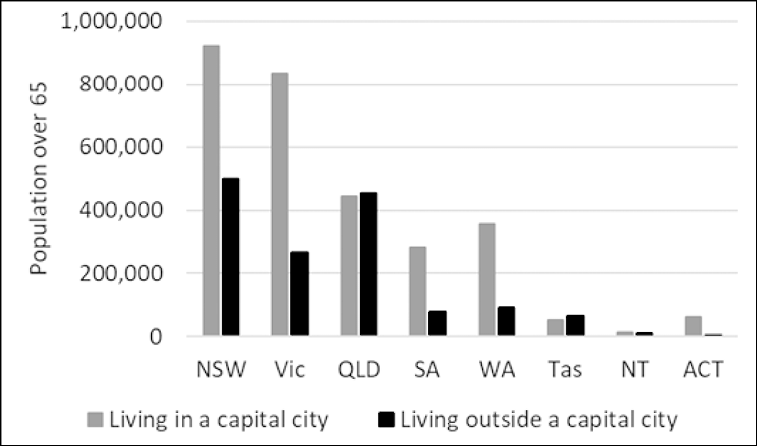Volume 30 Number 2
The end-of-life of used pads in Australia – who is filling up the bin?
Dr Emma Thompson Brewster, Dr Beth Rounsefell, Dr Nina Lansbury, Prof Katherine R O’Brien
Licensed under CC BY 4.0
DOI 10.33235/anzcj.30.2.28
Objective Single-use absorbent hygiene products (AHPs) provide essential health value, but also generate very large quantities of waste, contribute to water resource depletion, emit carbon and use land area for resource production. Currently, most absorbent hygiene products used in Australia end up in landfill.1 From a technical engineering perspective, there are other potentially more sustainable options for their disposal, but determining the “best” waste disposal pathway for the Australian context is multi-faceted. In order to evaluate a better disposal pathway, we need to map where and how much of this waste is being produced (and will be generated into the future). Therefore, the objective of this work was to better understand the key source(s) of single-use incontinence products for the purposes of informing waste management planning and policy in Australia.
Methods AHP waste generated from adult use (~600 kt/y) already outnumbers that generated by infants (~150 kt/y), and the quantity of adult AHP use will increase as our population ages (and birth rates are estimated to stay consistent).1 Considering a substantial amount of AHP waste is generated by populations over 65, demographics can help inform where to target efforts. 67% of Australian’s live in capital cities, and the fraction for the percentage of Australians over 65 living in capital cities is the same.2 40% of all Australians, including 40% of the over 65 population, live in Sydney and Melbourne (Figure 1). From a technical waste management perspective, strategy planning for a densely populated city differs to a regional area, with different relevant cost-benefit factors.
Furthermore, older Australians might be located at home, in aged care or in hospitals, and these different contexts will affect waste disposal. In 2022, 188 000 Australians were using permanent or respite residential aged care.3 In 2021-2022 public and private hospitals recorded 31.8 million days of patient care3 which equates to 87 123 patients in hospital each day, of whom only a portion will be over 65. The number of people in aged care and hospitalised represents ~1% (or less) of the total population of Australians over 65. Thus, while older Australian’s living in aged care or admitted to hospital have higher rates of incontinence, the volume of waste produced by use AHPs products is dominated by older Australians living in the community.
Findings The majority of AHP waste is generated by older Australians residing in the community in capital cities (primarily Sydney and Melbourne).
Conclusions Strategies to reduce the environmental impact of used AHPs will have the biggest impact if targeted towards community waste management in Sydney and Melbourne. This approach has additional benefits of including used AHPs from infants and people who menstruate as well.

Figure 1. Populations of Australian's aged 65 and over living inside and outside capital cities (data adapted from ABS 2023).
Author(s)
Dr Emma Thompson Brewster1, Dr Beth Rounsefell2, Dr Nina Lansbury2, Prof Katherine R O’Brien2
1Southern Cross University, Lismore, Australia
2The University of Queensland, Brisbane, Australia
References
- Thompson Brewster E, Rounsefell B, Lin F, Clarke W, O'Brien KR. Adult incontinence products are a larger and faster growing waste issue than disposable infant nappies (diapers) in Australia. Waste Manag. 2022;152:30-37. doi: 10.1016/j.wasman.2022.07.038.
- ABS (2023) Regional population by age and sex. [Internet] [cited 2023 Dec 7] Available from: https://www.abs.gov.au/statistics/people/population/regional-population-age-and-sex/latest-release.
- AIHW (2023a) GEN Aged care data – People using aged care & Australia’s hospitals at a glance. [Internet] [cited 2023 Dec 7] Available from: https://www.aihw.gov.au/reports-data.


